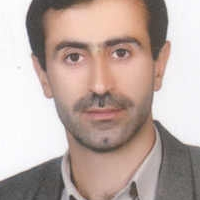Effect of the Compost of Trees Pruning Wastes on Some Microbiological Indices of a Calcareous Soil in the Presence of Mycorrhiza under Rhizobox Conditions
Author(s):
Article Type:
Research/Original Article (دارای رتبه معتبر)
Abstract:
Introduction
Trees pruning wastes by turning into compost and adding to soil improves the physical, chemical and biological properties of the soil. Soil biological indices are important aspects of soil quality, so soil quality is measured using different biological properties. The organic compounds are regularly released from plants into the rhizosphere, which increase the activity of the soil microbial community and improve the health of the soil. The organic matter such as compost, stimulates microbial activity like the enzymatic activity and microbial biomass in the soil. Another method to improve soil quality is the use of the microorganisms potential. The arbuscular mycorrhizal fungi (AMF) in soil can stimulate and increase soil microbial activity and also improve the activity of enzymes and microbial biomass in soil. The application of microorganisms and the addition of the organic matter to the rhizosphere can change the microbial communication composition of the rhizosphere. The Limiting roots to investigate the biological and chemical changes and the extent of these properties in the rhizosphere are challenges that have been less addressed. The rhizobox is one of the used tools to study the rhizosphere changes. The main objective of the present study was to investigate the effects of the compost prepared from pruning wastes of apples and grapes trees and also pruning wastes of apples and grapes trees on soil quality, in the presence of arbuscular mycorrhizal fungi, in rhizosphere of the wheat under the rhizobox conditions.
Materials and Methods
The present study was carried out in a completely randomized factorial design with three replications in rhizobox under greenhouse condition. The factors included the organic matter (compost of trees pruning wastes, trees pruning wastes and control) and soil (the rhizosphere and non-rhizosphere soil) in mycorrhizal inoculation conditions. The soil sample with light texture and low available phosphorus was prepared. The pruning wastes of apple and grape trees were collected from urmia orchards. Also, the compost of trees pruning wastes was prepared from the research greenhouse of Urmia University. The compost and pruning wastes were ground and crushed and then passed through a 0.5 mm sieve for the greenhouse experiment. The plants were planted in the rhizobox with the dimensions of 20 × 15 × 20 cm (length × width × height). The compost and pruning wastes were added to the boxes based on 1.5% pure organic carbon (each box contained 5.799 kg of soil). Glomus fasciulatum as mycorrhizal inoculation was used. The control treatments contained sterile soil with mycorrhizal inoculation and without organic matter. The wheat seeds (Triticumae stivum L.) of Pishtaz cultivar were grown in rhizoboxes. At the end of the growth period, organic carbon (OC) by Walkley-Black method, microbial biomass carbon (MBC) and microbial biomass phosphorus (MBP) by fumigation extraction method, metabolic quotient index (qCO2) (microbial respiration per unit of biomass), microbial quotient index (microbial biomass carbon per unit of organic carbon), carbon availability index (CAI) (substrate-induced respiration/microbial biomass ratio), colonization Percentage of arbuscular mycorrhizal fungi, and acid (ACP) and alkaline (ALP) phosphomonoesterase enzymes activities by spectrophotometry method, were determined.
Results and Discussion
The results showed that the application of compost significantly increased organic carbon, microbial biomass carbon, microbial biomass phosphorus and decreased MBC/MBP compared with the control treatment. Furthermore, compost increased the organic carbon, microbial biomass carbon and microbial biomass phosphorus in the rhizosphere soil by 8.08, 45.79 and 37.18 % compared with the non-rhizosphere soil, respectively. The pruning wastes increased 1.45, 1.26 and 1.30 fold metabolic quotient, carbon availability and acid phosphomonoesterase activity in the rhizosphere compared with non-rhizosphere soil, respectively.The highest activity of the alkaline phosphomonoesterase enzyme and the percentage of mycorrhizal root colonization were also related to pruning waste treatments in rhizosphere soils.
Conclusions
Different characteristics of the organic matter and the microbial inoculation led to an increase in the biological indices in the rhizosphere zone compared with non-rhizosphere soils. The application of organic matter in the soil, along with microbial inoculation, will accelerate the biological activity of the soil and thus contributes to a better cycle of nutrients in the soil. Following the application of organic matter, microorganisms rapidly grew and led to an increase in biological activity, such as increase activity of phosphomonoesterase enzymes, carbon and phosphorus of microbial biomass in the rhizosphere. It could be argued that increased activity of phosphomonoesterases and the microbial biomass and decreased metabolic quotient in the soil were influenced by the application of the organic materials and mycorrhizal inoculation. The findings of this study have a number of important implications for future practice. Therefore, the use of the organic materials and biological potential of the microorganisms are one of the most important tools to maintain organic carbon balance of the soil, contributing to the stimulation of soil microbiological activities.Keywords:
Language:
Persian
Published:
Journal of water and soil, Volume:32 Issue: 6, 2019
Pages:
1165 to 1177
magiran.com/p1944828
دانلود و مطالعه متن این مقاله با یکی از روشهای زیر امکان پذیر است:
اشتراک شخصی
با عضویت و پرداخت آنلاین حق اشتراک یکساله به مبلغ 1,390,000ريال میتوانید 70 عنوان مطلب دانلود کنید!
اشتراک سازمانی
به کتابخانه دانشگاه یا محل کار خود پیشنهاد کنید تا اشتراک سازمانی این پایگاه را برای دسترسی نامحدود همه کاربران به متن مطالب تهیه نمایند!
توجه!
- حق عضویت دریافتی صرف حمایت از نشریات عضو و نگهداری، تکمیل و توسعه مگیران میشود.
- پرداخت حق اشتراک و دانلود مقالات اجازه بازنشر آن در سایر رسانههای چاپی و دیجیتال را به کاربر نمیدهد.
In order to view content subscription is required
Personal subscription
Subscribe magiran.com for 70 € euros via PayPal and download 70 articles during a year.
Organization subscription
Please contact us to subscribe your university or library for unlimited access!



